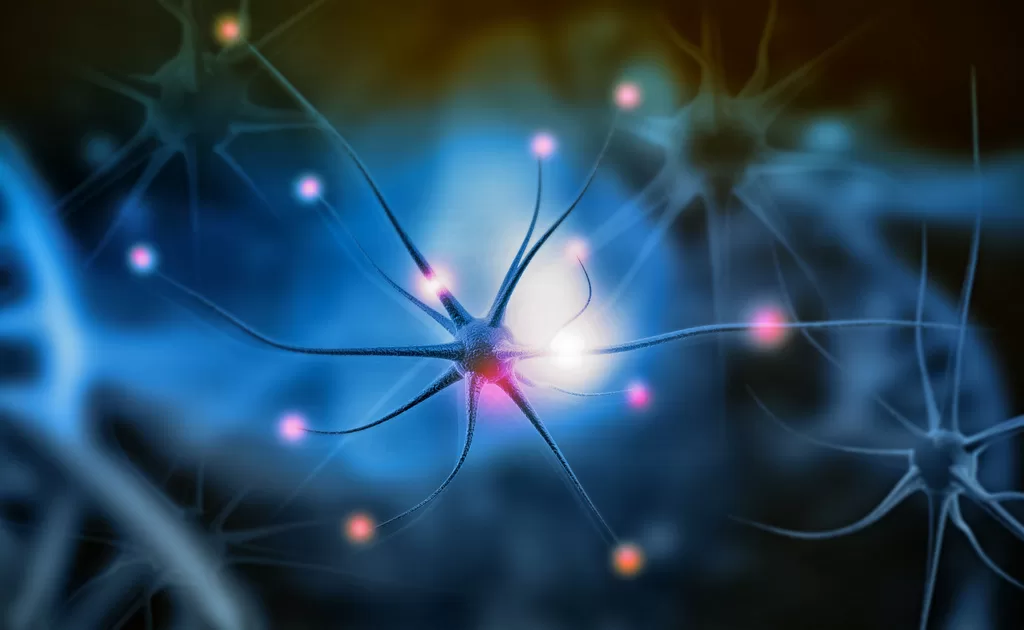How NAD+ Is Related to Cellular Energy Production
08/21/2023

In the vast realm of cellular energy production, one tiny molecule reigns supreme: NAD+. No, it's not the newest dance move; it's something far more fascinating. So, let's get down to it and understand the basics of NAD+!

Understanding the Basics of NAD+
What is NAD+ exactly? Well, it stands for Nicotinamide Adenine Dinucleotide. Trust me, you'll be dropping that phrase at your next dinner party. NAD+ is a coenzyme that plays a crucial role in our cells' energy production. It's like the secret sauce that keeps the cellular machinery running smoothly.
But how does it work? Let's dive a little deeper!
What is NAD+?
NAD+ is a compound composed of nicotinamide (a fancy word for vitamin B3), adenine, and two phosphate groups. Together, they form a molecular superhero that shuttles electrons between reactions in our cells. Think of it as a tiny energy taxi, ferrying those vital electrons around like a pro.
But what happens when NAD+ is in action? Picture this: you're at a busy airport, and NAD+ is the air traffic controller. It coordinates the movement of electrons, ensuring that they reach their intended destinations efficiently. Without NAD+, this intricate electron transport system would be in chaos, leading to a cellular traffic jam.
Now, let's take a closer look at the role of NAD+ in the body.
The Role of NAD+ in the Body
NAD+ isn't some lazy molecule that lounges around all day; it actually has a lot on its plate! It serves as a key player in cellular respiration, a process that converts nutrients into energy. Without NAD+, our cells would be left in the dark ages – low energy and minimal productivity. Let's see how this superhero coenzyme works its magic!
When we consume food, our bodies break it down into smaller molecules, such as glucose. These molecules then enter the cellular respiration pathway, where they are further broken down to release energy. Here's where NAD+ steps in. It acts as an electron carrier, shuttling electrons from the breakdown of glucose to a series of reactions called the electron transport chain.
Imagine the electron transport chain as a relay race, and NAD+ is the baton. It passes the baton (electrons) from one molecule to another, generating energy along the way. This energy is used to produce adenosine triphosphate (ATP), the currency of cellular energy. Without NAD+, this relay race would come to a screeching halt, leaving our cells starved for energy.
But NAD+ doesn't stop there. It also plays a vital role in DNA repair, helping to maintain the integrity of our genetic material. It acts as a cofactor for enzymes involved in DNA repair processes, ensuring that any damage is promptly fixed. Without NAD+, our DNA would be vulnerable to mutations and potential health issues.
Furthermore, NAD+ is involved in various signaling pathways within the body. It acts as a messenger, relaying information between different cellular processes. This communication network allows our cells to coordinate their activities, maintaining a harmonious balance within our bodies.
So, the next time you hear someone mention NAD+, you can impress them with your newfound knowledge. It's not just a fancy acronym – it's a molecular superhero that keeps our cells energized, repairs our DNA, and ensures efficient communication within our bodies. NAD+ truly is the unsung hero of cellular function!
The Connection between NAD+ and Cellular Energy

Now that we're familiar with NAD+'s alter ego, let's explore its special relationship with cellular energy. Brace yourself for a mini-science lesson!
Before we dive into the intricacies of NAD+ and cellular energy, let's take a moment to appreciate the remarkable complexity of the human body. Our cells are like bustling cities, constantly working to maintain the delicate balance required for our survival. And at the heart of this intricate web of processes lies NAD+.
The Process of Cellular Respiration
Like a well-orchestrated symphony, cellular respiration is a series of complex steps that generates energy from the food we consume. NAD+ swoops in like the maestro of this metabolic concert, energizing the reactions that convert food molecules into usable fuel.
Through a dance of chemical reactions, NAD+ accepts electrons from molecules involved in a process called glycolysis. It then delivers them to the mitochondria – the powerhouses of our cells – where they participate in the next act of respiration. It's a splendid performance that ensures our cells never miss a beat!
But NAD+'s role doesn't end there. It goes beyond being a mere conductor; it's an active participant in the energy production process.
NAD+ in Energy Metabolism
NAD+ isn't just content with conducting the cellular respiration symphony; it's also the chief regulator of many critical metabolic pathways. It acts as a coenzyme for enzymes involved in processes like fatty acid oxidation and the Krebs cycle, making sure these energy-producing pathways operate at full capacity.
Moreover, NAD+ participates in the delightful process of oxidative phosphorylation, where the final synthesis of ATP (the cellular energy currency) occurs. It's like getting a bonus boost of energy from NAD+. How splendid!
Imagine NAD+ as a tireless worker, tirelessly shuttling electrons and ensuring that our cells have the energy they need to function optimally. Without NAD+, our cellular symphony would fall flat, leaving us feeling fatigued and lacking vitality.
So, the next time you enjoy a delicious meal, remember the incredible role NAD+ plays in converting those nutrients into the energy that fuels your every move. It's a fascinating dance of molecules, orchestrated by the maestro NAD+, ensuring that the show goes on!
The Importance of NAD+ in Cellular Energy Production
Now that we fully appreciate NAD+'s tireless efforts in the realm of cellular energy production, let's understand just how vital it is for our overall well-being. Prepare to be amazed!
NAD+ (nicotinamide adenine dinucleotide) is a coenzyme that plays a crucial role in the production of energy within our cells. It is involved in various metabolic processes, ensuring that our bodies have the energy they need to function optimally.
How NAD+ Contributes to Energy Production
At the heart of it all, NAD+ facilitates the conversion of nutrients into energy. By accepting and donating crucial electrons, it keeps the energy production machinery humming along nicely. Without NAD+, our cells would be like cars without gasoline – no vroom-vroom!
When we consume food, our bodies break down the macronutrients (carbohydrates, fats, and proteins) into smaller molecules. These molecules then enter various metabolic pathways, where NAD+ acts as a coenzyme. NAD+ accepts electrons from these molecules, allowing them to undergo chemical reactions that ultimately release energy.
Moreover, NAD+ plays a crucial role in maintaining a healthy balance between energy production and consumption. It helps regulate cellular metabolism, ensuring that energy production matches demand. It's like NAD+ is our very own energy traffic controller, keeping things running smoothly!
In addition to its role in energy production, NAD+ is involved in other essential cellular processes. It participates in DNA repair, helps regulate gene expression, and supports the function of certain enzymes. This coenzyme truly wears many hats!
The Impact of NAD+ Deficiency on Energy Production
When the NAD+ levels take a nosedive, so does our cellular energy production. Think of it as a temporary power outage, leaving our cells sluggish and fatigued. NAD+ deficiency has been linked to a variety of health conditions, including metabolic disorders and age-related decline. So let's keep those NAD+ levels up, shall we?
Several factors can contribute to NAD+ deficiency. Aging is one of them, as NAD+ levels naturally decline as we get older. Additionally, poor diet, chronic stress, and certain medical conditions can also deplete NAD+ levels. It's important to be mindful of these factors and take steps to support NAD+ production and maintain optimal levels.
Fortunately, there are ways to boost NAD+ levels. Regular exercise, a balanced diet rich in NAD+-precursor nutrients (such as niacin and tryptophan), and adequate sleep can all help support NAD+ production. Additionally, certain supplements and therapies have shown promise in increasing NAD+ levels in the body.
By understanding the importance of NAD+ in cellular energy production and taking proactive steps to support its levels, we can ensure that our cells have the energy they need to keep us healthy, vibrant, and full of life!
Enhancing NAD+ Levels for Optimal Energy Production
Now, for the part we've all been waiting for – boosting our NAD+ levels! Let's explore some natural ways and medical interventions to give our cellular energy production a much-needed boost.
But before we dive into the details, let's take a moment to understand why NAD+ is so crucial for our energy levels. Nicotinamide adenine dinucleotide (NAD+) is a coenzyme found in every cell of our body. It plays a vital role in various metabolic processes, including energy production. As we age, our NAD+ levels naturally decline, leading to decreased energy production and potential health issues.

Natural Ways to Boost NAD+ Levels
Good news, nature lovers! Several lifestyle factors can help elevate NAD+ levels naturally.
Regular exercise is not only beneficial for our overall health but also plays a significant role in boosting NAD+ levels. When we engage in physical activity, our body responds by increasing the production of NAD+ to meet the energy demands. So, lace-up those sneakers and get moving!
A balanced diet is another key player in this energy-boosting game. Certain foods are rich in precursors that our body can use to synthesize NAD+. Incorporating foods like fish, poultry, nuts, seeds, and green leafy vegetables into our meals can provide the necessary building blocks for NAD+ production.
Adequate sleep is often underestimated but plays a crucial role in maintaining optimal NAD+ levels. During sleep, our body goes through various restorative processes, including NAD+ synthesis. So, make sure to prioritize a good night's sleep to support your cellular energy production.
Additionally, certain supplements, such as nicotinamide riboside (NR) and nicotinamide mononucleotide (NMN), have shown promising results in increasing NAD+ levels. These supplements provide a direct source of precursors that can be readily converted into NAD+.
Medical Interventions to Increase NAD+ Levels
For those seeking a more direct route to a NAD+ boost, medical interventions are here to save the day.
Intravenous infusions of NAD+ have gained popularity as a promising therapy to replenish levels quickly. This method involves the administration of NAD+ directly into the bloodstream, bypassing the need for synthesis. However, it is essential to note that this procedure should only be performed under the supervision of a qualified healthcare professional.
Another medical intervention that has shown potential is the use of NAD+ precursors, such as NR and NMN, in supplement form. These precursors can be taken orally and are converted into NAD+ within the body. However, it is crucial to consult a healthcare professional before starting any supplementation regimen.
It's important to remember that while boosting NAD+ levels can have numerous benefits, it is always best to approach any intervention with caution and under the guidance of a healthcare professional. Each individual's needs and circumstances may vary, so personalized advice is essential.
So, whether you choose to incorporate natural lifestyle changes or explore medical interventions, the goal remains the same – to optimize your NAD+ levels and unlock the full potential of your cellular energy production!
Future Research on NAD+ and Energy Production
We've only scratched the surface when it comes to understanding the wonders of NAD+ and its role in cellular energy production. The realm of research holds exciting possibilities that could shape future therapies and illuminate new pathways to optimal energy production. Let's take a peek into the crystal ball!
Potential Therapeutic Uses of NAD+
Beyond its role in energy production, NAD+ has shown promise for various therapeutic applications. Researchers are exploring its potential in treating age-related diseases, neurodegenerative disorders, and metabolic conditions. The future looks bright for NAD+ and its superhero capabilities!
Unanswered Questions in NAD+ Research
While NAD+ may seem like a scientific rockstar, there are still many mysteries waiting to be unraveled. Researchers are delving into the depths of NAD+ metabolism, exploring how it interacts with other molecules and deciphering its precise mechanisms of action. These unanswered questions are like clues to a grand scientific treasure hunt!
Weaving the Threads of Cellular Energy Production
There you have it – a journey into the captivating world of NAD+ and its undeniable connection to cellular energy production. From its basic structure to its pivotal role as the conductor of cellular respiration, NAD+ proves to be a remarkable molecule worth celebrating.
So, the next time you feel that burst of energy or marvel at the intricacies of your cells, remember to give a little nod to NAD+. After all, it's the unsung hero behind the scenes, tirelessly working to keep your cellular energy production at its peak. Take a moment to appreciate the vibrant dance of NAD+ and cellular energy – it's truly awe-inspiring!

 Back to Blog
Back to Blog